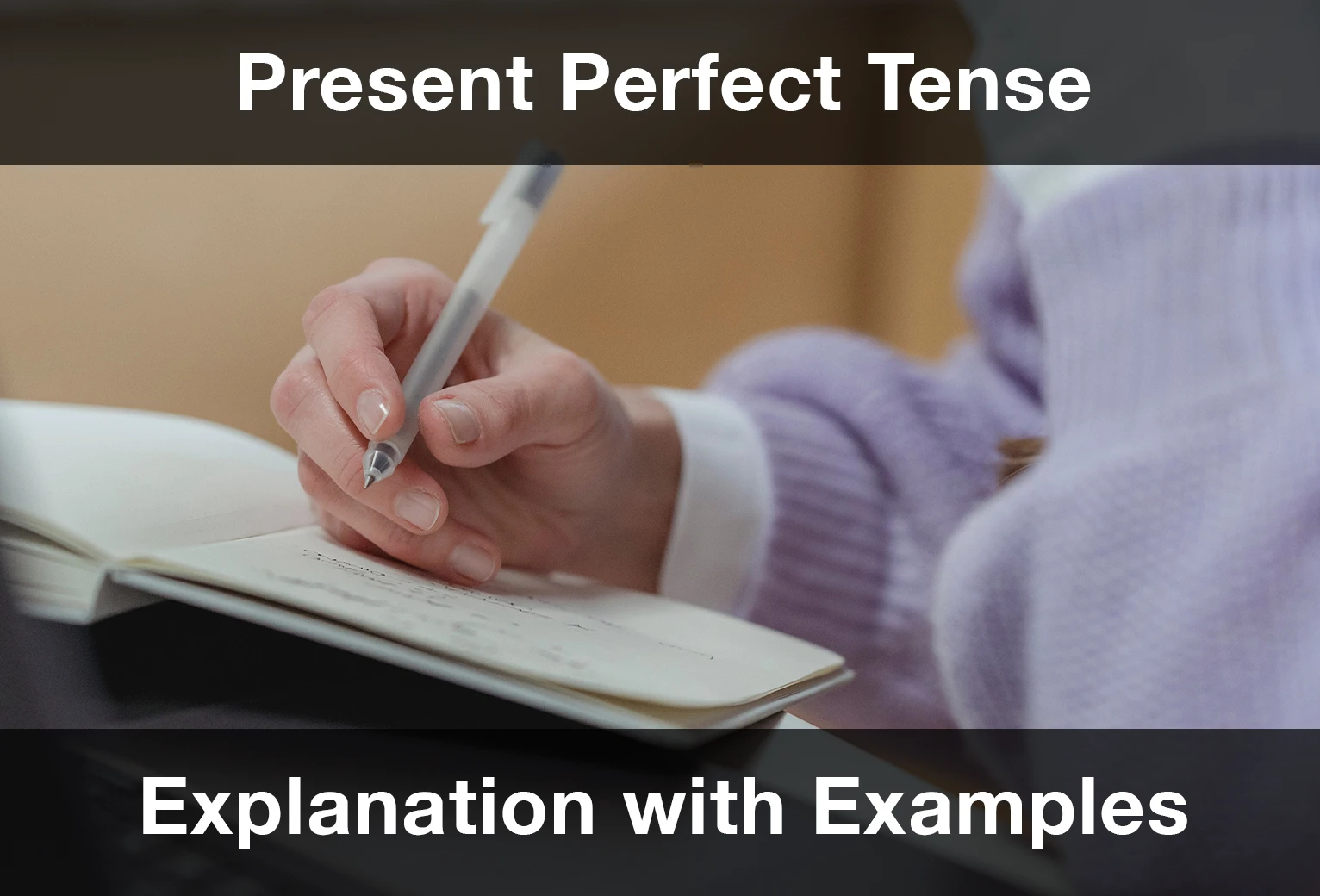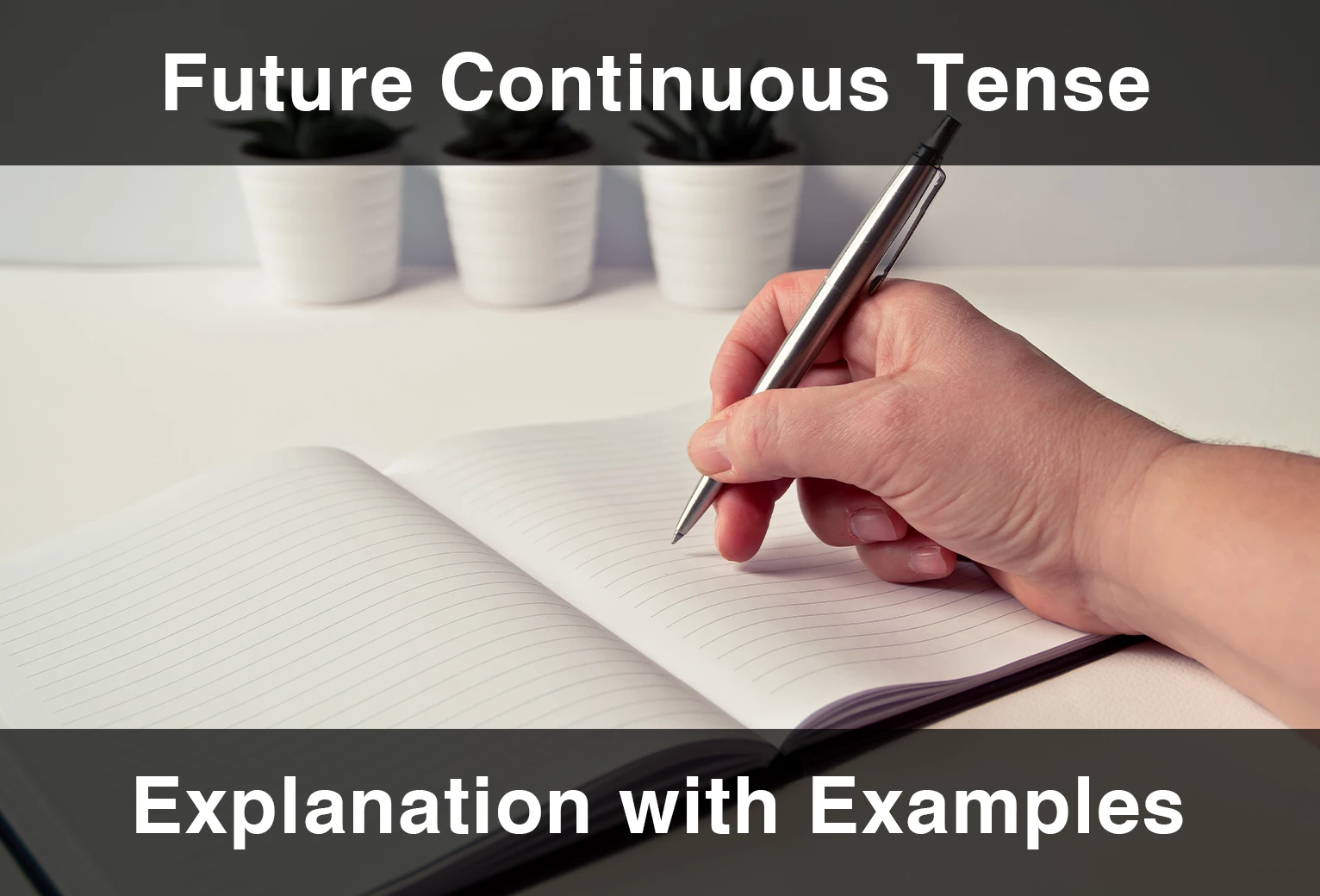We all know that to speak English fluently and to express ourselves clearly, we need to learn the tenses. Tenses are what defines the actions we talk about, which we do through verbs. Therefore, a tense changes the meaning of a verb by referring to what time it happens. Present Perfect Continuous Tense is one of these tenses we use in our everyday lives while speaking English. Learning the Present Perfect Continuous Tense in detail will help you immensely in your journey of achieving fluency in English. This article is prepared to help you learn all about the Present Perfect Continuous Tense.
What is the Present Perfect Continuous Tense?
Present Perfect Continuous Tense is used to describe actions that have started happening in the past, and are still continuing. These actions have yet to end and they may continue in the future. This tense emphasizes the duration rather than the completion of an action. We use this tense to talk about recent and presently relevant actions, as they are still continuing right now. It also helps you express the cause and effect relationship between a past action and its current consequences. Breaking down the name of this tense will help us understand its function better.
Present tenses refer to actions that are happening in the present. Perfect tenses are generally referring to actions that are finished. Continuous tenses refer to actions that continue over a time period, whether the actions are finished or not. Therefore, we can deduct that the Present Perfect Continuous Tense refers to actions that have started in the past and continued up until now, and still continue to happen in the present.
What Are The Grammar Rules of Present Perfect Continuous Tense?
The Present Perfect Continuous tense, also known as the Present Perfect Progressive tense, is used to describe an action that started in the past, is still ongoing in the present, and may continue into the future. The following are the grammar rules for constructing sentences in the Present Perfect Continuous tense:
Subject + have/has + been + verb-ing: The sentence structure begins with the subject followed by the auxiliary verb “have” or “has,” depending on the subject (e.g., “I have,” “he/she/it has”). Then, the auxiliary verb “been” is added, followed by the main verb in its present participle form (verb-ing).
Use of “have” or “has”: “Have” is used with the pronouns “I,” “you,” “we,” and “they” (e.g., “I have been working”). “Has” is used with the pronouns “he,” “she,” “it,” and singular nouns (e.g., “She has been studying”).
Use of “been”: “Been” is the past participle of the verb “be” and is used in the Present Perfect Continuous tense to indicate an ongoing action. It follows the auxiliary verb “have” or “has” (e.g., “I have been working”).
Use of present participle (-ing form): The main verb in the sentence is used in its present participle form, which is created by adding “-ing” to the base form of the verb (e.g., “working,” “studying,” “playing”).
Some points to pay attention when using the Present Perfect Continuous Tense are:
Subject-Verb Agreement: The verb “have” or “has” in the present perfect continuous tense has to with the subject. Since “has” can only be used with third person singular subjects, “he/she/it”; the other subjects such as the first person singular “I”, second person singular and plural “you”, first person plural “we” and third person plural “they “, must use “have”.
Example: – I have been waiting for an hour.
– He has been reading this book for a week now.
Auxiliary Verbs: The auxiliary verbs “have” and “be” are used in combination. “Have” indicates the present perfect tense, while “be” indicates the continuous aspect.
Present Perfect Continuous Tense Grammar Table
The Present Perfect Continuous Tense uses the formula of subject + have/ has + been + V-ing. Here is a table and some examples to help you better understand the grammar structure.
| Subject | Auxiliary Verb (Have) + Negative Adverb | Auxiliary Verb (Be) | Verb |
|---|---|---|---|
| I/You/We/They | have / have not | been | V+ing |
| He/She/It | has / has not | been | V+ing |
I have been working here for 24 years.
He has been making plans for this trip for a week.
What is the Present Tense Suffix in English?
The present perfect continuous tense suffix is “-ing”. “-ing” indicates the present perfect part, adding the meaning of continuation. It showcases that the action is still ongoing at the time of speaking. Here are some examples for the “-ing” suffix:
She has been working on that book all year.
They have been playing video games since 3 pm.
Structuring Sentences with Present Perfect Continuous Tense
To structure sentences in the Present Perfect Continuous tense, follow these guidelines:
Start with the subject: Begin the sentence with the subject, which can be a pronoun (I, you, he, she, it, we, they) or a noun (a person, place, or thing).
Add the auxiliary verb “have” or “has”: Choose the appropriate form of “have” or “has” based on the subject:
“Have” is used with the pronouns “I,” “you,” “we,” and “they.”
“Has” is used with the pronouns “he,” “she,” “it,” and singular nouns.
Include the auxiliary verb “been”: Use the auxiliary verb “been” immediately after “have” or “has.”
Use the present participle form of the main verb (-ing form): Add the main verb in its present participle form (verb-ing) right after “been.”
Complete the sentence with additional information: You can include time expressions, duration, or any other relevant details to provide more context.
The formula is subject + have/ has + been + V-ing. Here are 10 present perfect continuous sentence examples to help you better understand the formula.
I have been studying for the exam all week.
She has been working at the post office for seven years.
They have been learning Japanese for five months now.
He has been playing the saxophone since he was 7 years old.
We have been waiting for the bus for over an hour.
The children have been playing at the park all morning.
The team has been practicing for the competition for a month.
It has been raining heavily since morning.
Sarah has been cooking dinner in their newly renovated kitchen.
The construction workers have been building the new bridge for months.
Present Perfect Continuous Tense Positive Sentences
To construct a positive sentence in Present Perfect Continuous Tense, we directly use the formula we learned above. The formula is subject + have/ has + been + V-ing. Here is a table and some examples to help you better understand how to form a positive sentence in Present Perfect Continuous Tense.
| Subject | Auxiliary Verb (Have) | Auxiliary Verb (Be) | Verb |
|---|---|---|---|
| I/You/We/They | have | been | V+ing |
| He/She/It | has | been | V+ing |
I have been doing work since you left.
You have been doing a great job.
It has been raining cats and dogs out there.
We have been learning new things ever since we joined the club.
They have been selling these delicious cakes for three months now.
Present Perfect Continuous Tense Negative Sentences
To construct a negative sentence in Present Perfect Continuous Tense, we write subject + have/ has + not + been + V-ing. The auxiliary verbs that take the negative adverb “not”, “have” and “has”, can be abbreviated to “haven’t” and “hasn’t”. Here is a table and some examples to help you better understand how to form a negative sentence in Present Perfect Continuous Tense.
| Subject | Auxiliary Verb (Have) | Negative Adverb | Auxiliary Verb (Be) | Verb |
|---|---|---|---|---|
| I/You/We/They | have | not | been | V+ing |
| He/She/It | has | not | been | V+ing |
I have not been eating healthy.
You haven’t been returning to my calls.
She hasn’t been working here for too long.
We haven’t been liking any new movies that we watch.
They haven’t been writing any good jokes.
Present Perfect Continuous Tense Interrogative Sentences
To form an interrogative sentence in Present Perfect Continuous tense, we use the formula of have/has + subject +been + v-ing and have/has + not + subject +been + v-ing. Here are a few tables and some examples for you to better understand.
Positive interrogative sentences:
The formula for a positive interrogative sentence in Present Perfect Continuous tense is have/has + subject +been + v-ing.
| Auxiliary Verb (have) | Subject | Auxiliary Verb (be) | Verb |
|---|---|---|---|
| Have | I/You/We/They | been | V+ing |
| Has | He/She/It | been | V+ing |
Have I been breaking your heart?
Have you been looking for me?
Has she been doing this all day?
Have they been coming to school lately?
Has it been working after being repaired?
Negative interrogative sentences:
The formula for a negative interrogative sentence is have/has + not + subject +been + v-ing.
| Auxiliary Verb (have) | Negative Adverb | Subject | Auxiliary Verb (be) | Verb |
|---|---|---|---|---|
| Have | not | I/You/We/They | been | V+ing |
| Has | not | He/She/It | been | V+ing |
Have I not been paying attention?
Haven’t you been listening to me?
Hasn’t he been watching and recommending this show to you?
Have we not been attending this class regularly?
Haven’t they been learning anything?
Present Perfect Continuous Tense Interrogative Sentence Examples Using Question Words
We can form Present Perfect Continuous Tense Interrogative sentences using question words to ask more specific questions. These question words include “How”, “What”, “When”, “Where”, “Which”, “Who”, “Whose”, and “Why”. To form a Present Perfect Continuous Tense interrogative sentence with question words, we write question word + have/has + subject + been + v-ing. Here are some tables and examples to help you better understand.
For positive questions:
| WH- Question | Auxiliary Verb (have) | Subject | Auxiliary Verb (be) | Verb |
|---|---|---|---|---|
| How, What, When, Where, Which, Who, Whose, and Why | Have | I/You/We/They | been | V+ing |
| How, What, When, Where, Which, Who, Whose, and Why | Has | He/She/It | been | V+ing |
What have I been doing all weekend?
How long has she been waiting for the taxi?
Why have they been laughing so much?
Where have you been visiting recently?
How often has he been practicing the piano?
For negative questions:
| Question Word | Auxiliary Verb (have) | Negative Adverb | Subject | Auxiliary Verb (be) | Verb |
|---|---|---|---|---|---|
| How, What, When, Where, Which, Who, Whose, and Why | Have | not | I/You/We /They | been | V+ing |
| How, What, When, Where, Which, Who, Whose, and Why | Has | not | He/She/It | been | V+ing |
Why haven’t you been working on the project?
How long hasn’t she been working in the mall?
Why haven’t they been learning Portuguese?
Where haven’t you been visiting this summer?
How often hasn’t he been looking for a new apartment?
Short Answer Questions in Present Perfect Continuous Tense
We don’t always have to reply with full sentences when answering questions in the present perfect continuous tense. We can also answer the questions as follows: Yes/No, (subject) (have-haven’t)/(has-hasn’t). Here is a table and some examples to help you better understand.
For affirmative answers, here is a table:
| Modifying Adverb | Subject | Auxiliary Verb |
|---|---|---|
| Yes | I/You/We/They | have |
| Yes | He/She/It | has |
Have you been writing the paper? Yes, I have.
Has she been working here for 5 years? Yes, she has.
For negative answers, here is a table:
| Modifying Adverb | Subject | Auxiliary Verb |
|---|---|---|
| No | I/You/We/They | have not (haven’t) |
| No | He/She/It | has not (hasn’t) |
Have they been looking over here? No, they haven’t.
Has it been snowing? No, it hasn’t.
Temporal Adverbs (Adverbs of Time) With Present Perfect Continuous Tense
The present perfect continuous tense is commonly used with the indefinite temporal adverbs that don’t specify exactly what time the actions have happened. These temporal adverbs are since, for, recently, all day/week/year etc. Here are a few examples:
I’ve been training at the gym for some time now.
You haven’t been reading that book recently.
She has been living in London since 2010.
They have been working on the secret project all year.
Frequently Asked Questions about Present Perfect Continuous Tense
Question 1: What is the Difference Between Present Perfect Continuous Tense and Simple Present Continuous Tense?
Present Perfect Continuous tense focuses on the ongoing action or state that started in the past and continues up to the present, emphasizing its relevance to the present. Simple Present Continuous tense describes actions or states happening at the present moment without necessarily emphasizing duration or a connection to the past.
Question 2: What is the Difference Between Present Perfect Continuous Tense and Simple Past Tense?
Present Perfect Continuous tense focuses on the ongoing nature of a past action or state while emphasizing its relation to the present. Simple Past tense describes actions or states that started and ended in the past without emphasizing its connection to the present.
Question 3: What is the Difference Between Present Perfect Continuous Tense and Simple Present Tense?
Present Perfect Continuous tense focuses on the ongoing nature of an action or state that started in the past and continues up to the present, emphasizing its relation to the present. Simple Present tense describes habitual actions, general truths, or regular occurrences in the present without emphasizing a connection to the present.
Can the Present Perfect Tense be used to express surprise or disbelief?
Yes, you can show surprise or disbelief by employing the Present Perfect Tense, like in the statement “Have you really never been to New York City before?”
Would you like to put what you have learned into practice? You can access everything you need to learn English on a single platform! With 25-minute one-on-one live English lessons, 40-minute group lessons, more than 30,000 interactive videos, vocabulary learning tools, AI-supported tutor MiMi, quizzes, and interactive activities, EnglishCentral offers its users a personalized and quality education plan at an affordable price. How about registering for EnglishCentral now and starting to learn English?











